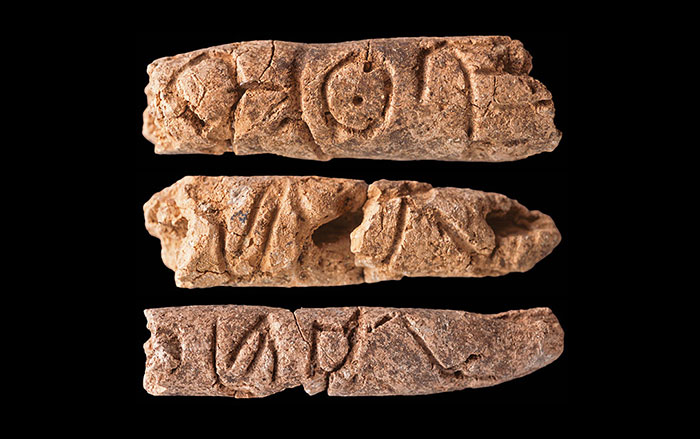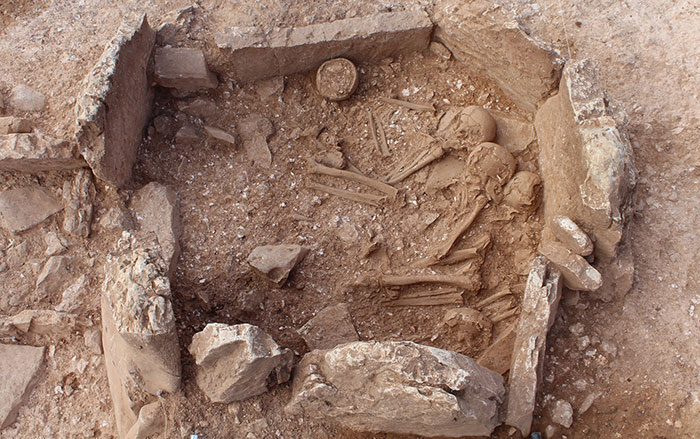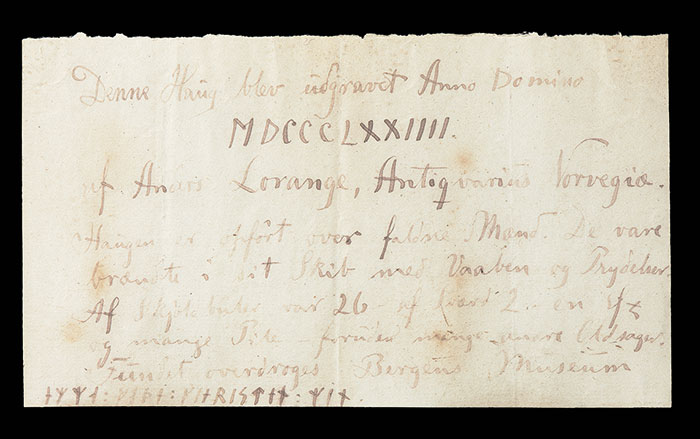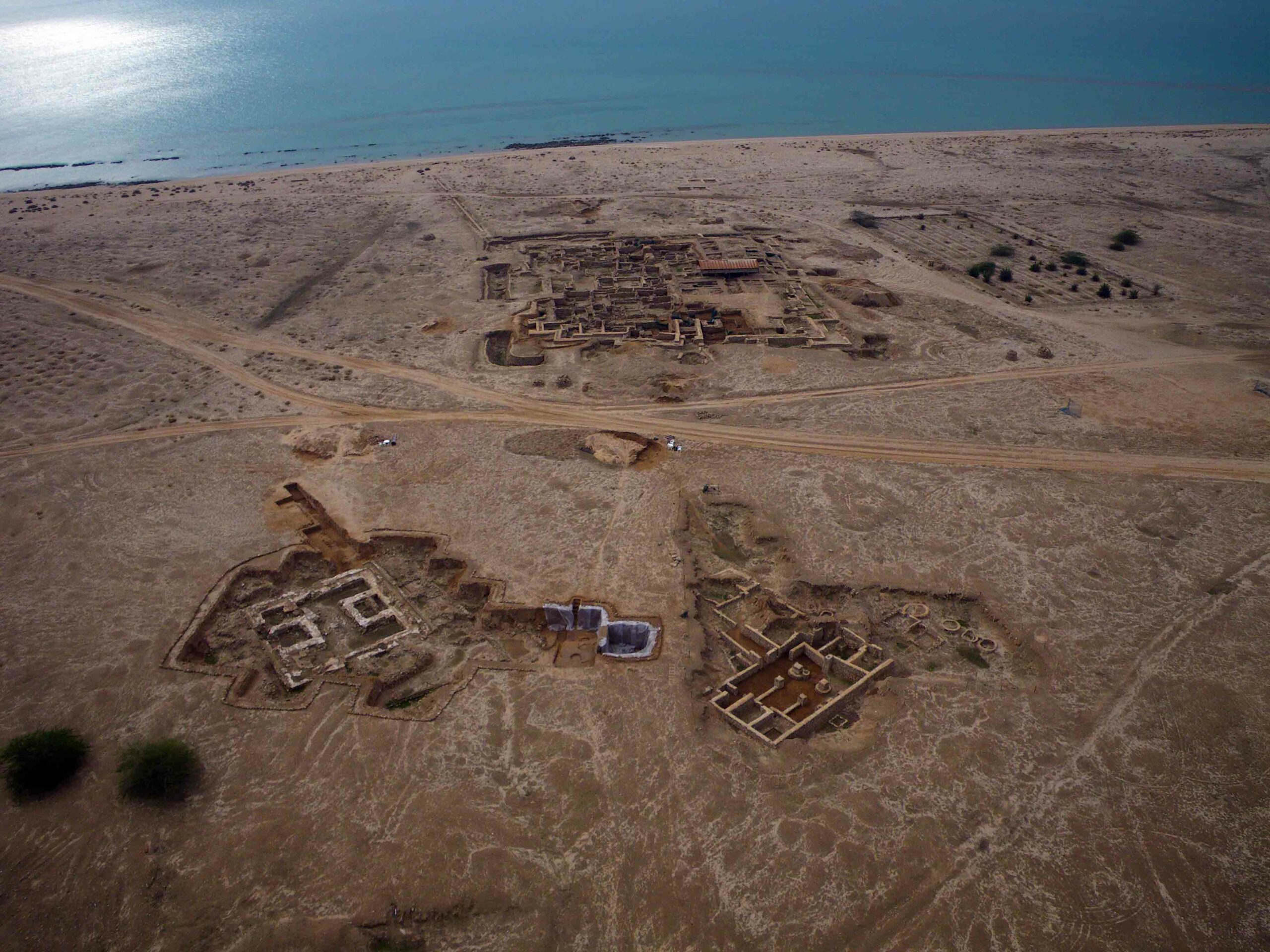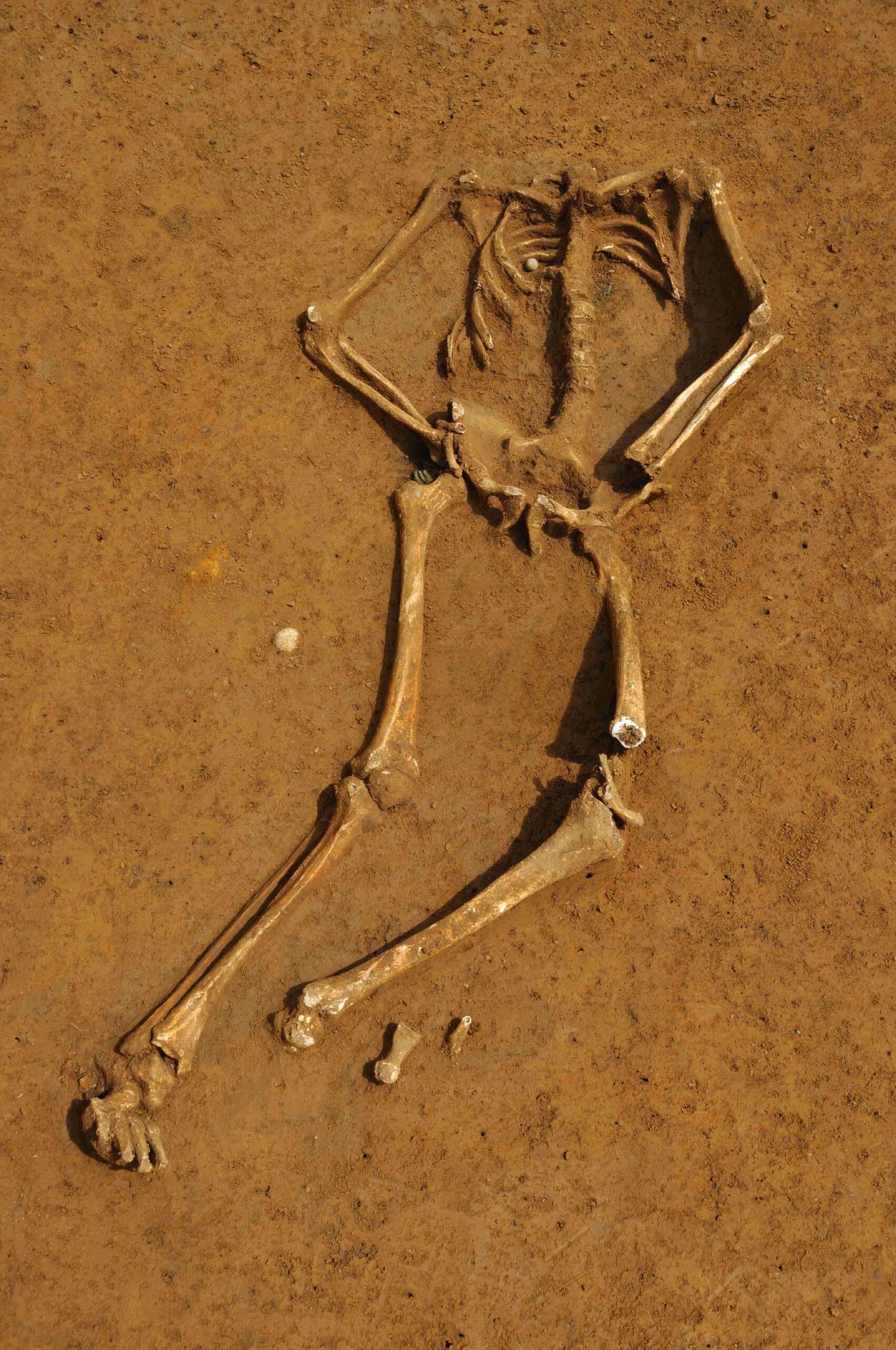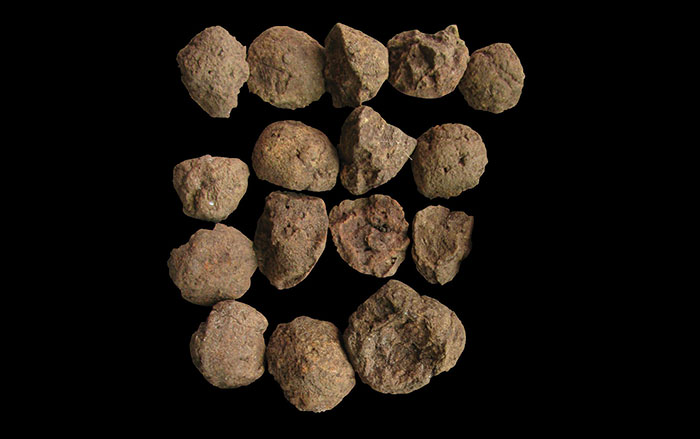
BERKSHIRE, ENGLAND—The remains of a woman buried some 4,400 years ago with a large, finely made beaker against her hip have been uncovered in a quarry near Windsor. Her necklace, adorned with five small, tubular sheet gold beads and beads made of lignite; fragments of amber buttons; and her bracelet of lignite beads suggest that she may have been from an elite family. The gold probably came from southern England or Ireland, and the lignite from eastern England. The amber may have been collected from the island’s east coast, or it may have been imported from the Baltic. “It is interesting to think who this woman was within her community. She was probably an important person in her society, perhaps holding some standing which gave her access to prestigious, rare and exotic items,” said archaeologist Gareth Chaffey. This is the first time a Copper Age woman has been found buried in Britain with such high status items.


